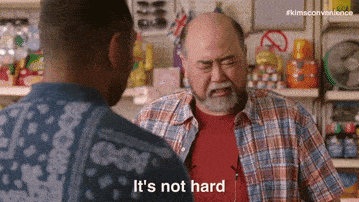Here’s a question for you: how many monitors do you have? 1? 2? 🤔
Maybe you’re a regular Dwight Schrute with your own Mega Desk. If so, congrats.
These days, many of us have far too many windows open, too many tabs, and an ever-growing array of apps that we’re using on a daily basis.
Are they really helping our productivity though?
I’m not so sure...

Dashboard Fatigue is a Real Problem for Go To Market (GTM) Teams…
Similar to screens, how many dashboards, portals, or consoles do you have? Or maybe a better question is how many of those do you need?
Productiv’s 2021 State of SaaS Sprawl report shows that most companies have 40 – 60 SaaS tools in each department! And large enterprises have 364 tools companywide!!!
Each one of these SaaS tools usually means yet another dashboard, portal, or console.
We can think about it this way. According to Rupert, its defined as, “the headache and eventual numbness that results from spending too much time staring at reports/dashboards and trying to understand their content.”
So basically, many of us are overwhelmed by just how many things we are expected to look at and engage with on a regular basis.
The result? Lower productivity and an average app engagement rate of only 45%. This makes sense. The amount of time it takes just to login and manage all this software likely means not only a decrease in output but also less attention where it is most needed: on your customers.
In this case, the more is not the merrier.
Everyone is less efficient despite seeming to have “more information”.
But we know how easy it is to get overloaded with information.
And then it feels impossible to make sense of anything!
The increasingly bloated dashboard
To make matters worse, many SaaS dashboards become a dumping ground for every piece of information connected to the app.
Having a lot of information gets you further away from the right information.
Not every data point can lead you in the right direction.
One reason this happens is that many companies try to wring every ounce of worthwhile data from their product and deliver it to the end user.
Regardless of whether it’s the proper information or the end user is the right person to get it.

Another reason we see this is because many SaaS vendors are often guilty of thinking more is better, so they constantly add more functionality in effort to prove their product value.
But is their product really the best place to be presenting yet another piece of information?
Regardless of the reason, the result is feature creep. 😱 The ever-present boogieman of the product design world where new capabilities are continually added to a product.
According to a Harvard Business School study about feature creep, end users perceive a large feature set as complexity, leading to dissatisfaction and feature fatigue.
The first step to defeating chronic dashboard fatigue…
So, we end up with feature fatigue on top of dashboard fatigue. When enterprise users need to log into 40 different (and overloaded) dashboards, it’s no wonder they are experiencing unnecessary complexity and fatigue.
The result here is a user is unable to parse what is valuable to them or create any sort of hierarchy of importance. Instead, they end up with an endless stream of information marching across their monitors, unable to find the signal through the noise.
This is the enterprise equivalent of staring at a never-ending list of Netflix titles on a Friday night. No surprise it’s paralyzing! Except, in a business setting getting buried in excess details creates moments of inaction that can lead to critically missing what your customers need…
Understanding a problem is the first step in solving it.
Harkening back to the golden age of the customer: Meet customers where they are already at
Although there isn’t a one-size-fits-all solution for this problem, we can rely on the guiding principle of meeting the customer where they are.
To be clear, I’m not saying dashboards are inherently bad. Data visualization can be a great thing! But there are a few things about dashboards- especially too many of them- that aren’t great.
For instance, assuming you need to force customers to use a dashboard just “so they have a home base”? Not cool. 👎 How many “home bases” can someone reasonably have? It’s in the name...
Also, using a dashboard as a dumping ground for all the information that might be important to a user? Double not cool. 👎👎 It kind of makes it feel like you’re looking at this...

On the other hand, using what you know about a user to give them the right information, where they need it? Very cool. 👍👍👍
The core tenet for a stellar customer experience is to give them the right information where and when it is most useful to them.
When your core features and services are embedded within a user’s existing workflow, the question is no longer how to get a user to use your product.
Rather, it’s how could they possibly be successful without it?
Users don’t feel like they’re chasing hundreds of different functions in too many apps, with little rhyme or reason as to why the data presented is there.
Things come more naturally when we’re mindful about where we put things, and when they’re presented.
How Tingono is moving us Away from Exhausting Dashboard Fatigue

So we know how much time we’re spending on all these dashboards.
We do quite a bit of it ourselves.
So while we work on building Tingono, we’ve kept this in mind.
We didn’t want to add a bunch more windows to constantly look at. And we already knew Slack ourselves!
With over 600k companies using it, Slack happens to be an incredibly popular business communication tool at the moment. According to Slack, users spend more than 9 hours per workday connected to its platform. Even more impressive, users spend ~90 minutes per workday actively using Slack.
The first thing Tingono did to meet customers where they are is recognize how critical Slack is in a user’s daily workflow. The second thing we did is ask what insights and data we can productively share through Slack rather than place in a dashboard.
With this approach, we’ve minimized dashboard bloat and provided accessible, actionable customer data insights right where they can use them.
There’s no hopping around from screen to screen trying to make sense of various insights and ideas with no real flow. We wanted it to be seamless.
Our philosophy has been to not ask our users to change their behavior unless there is no viable alternative. With this approach, we are meeting the customer where they are and reducing unnecessary pain points. It’s a better, more efficient way to go about the day.
And when you’re more efficient, you can focus on other work that truly demands your full attention. Having insights and actions mere clicks away makes everyone’s job a little easier, and their work a lot better!
Here’s to a more customer-centric (and less dashboard-y) future!
Curious to see this future in action? Book a demo today. 🎉





